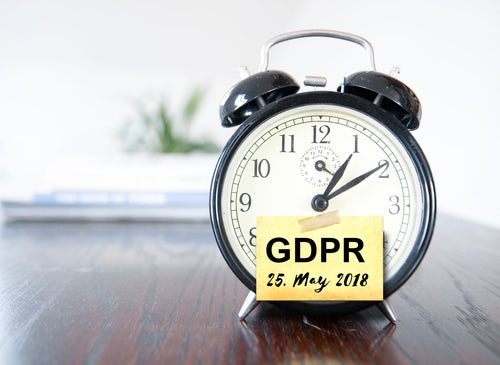Marketers are more focused on data than ever before.
In a survey carried out by Econsultancy earlier this year, the majority of B2C marketers cited ‘data-driven marketing which focuses on the individual’ as the ‘single most exciting opportunity’ in 2019.
However, as consumers become increasingly sceptical about how their data is being used – and privacy laws make the situation more critical for marketers – we’re now seeing a move away from the most commonly-used data types.
Life in a post-GDPR world
According to research by DLA Piper, there have been over 59,000 data breaches reported to data protection authorities in Europe since GDPR was introduced in 2018. The highest number of breaches have come from the Netherlands, Germany, and the UK, with approximately 15,400, 12,600, and 10,600 breaches being reported respectively.
Among these have been a number of high-profile cases including Google, Marriott International, and British Airways. The latter received an unprecedented fine of £183 million after a data breach that enabled attackers to retrieve the personal information of approximately 500,000 of the airline’s customers.
So, as the ICO cracks down on companies that flout the rules, marketers are becoming increasingly wary of using both first and third party data. The latter can be particularly unreliable, as it typically stems from unrelated sources, and can become quickly outdated. As a result, zero party data is coming to the forefront.

How is zero party data different?
The term ‘zero party data’ was first coined by Forrester to describe any data that a customer proactively and deliberately shares. It differs from first-party data as it provides organisations with explicit consumer preferences, rather than implied preferences (that are generated from a brand’s interactions with a consumer).
Essentially, zero party data aligns with the customer’s desire for personalisation, as it enables them to proactively state what they want from a brand in exchange for their personal information. It gives companies greater insight into their needs, interests, and intent – unlike first-party data which can only offer insight generated from purchase history or basic facts like date of birth.
Zero party data also shines a light on explicit consent, giving companies the assurance required to process potentially sensitive data (such as political opinions).
What are the benefits of zero party data?
One of the main benefits of zero party data is intrinsic customer engagement. Brands using zero party data can be assured that customers actively want to hear from them – and will be engaged when they are targeted.
Alongside this, there is greater clarity and accuracy in zero party data, as brands do not have to infer preferences. Rather, the data comes directly from consumers themselves, allowing brands to build direct and personal relationships with them.
Of course, even if it is freely given, there’s no guarantee that zero party data is 100% accurate. Forrester suggests that “asking for too much information at one time can be overwhelming and may lead your customers to provide false information just to get through the process.”
This is why a good UX is vital. In order to provide a tangible value exchange, brands should aim to provide an enjoyable or entertaining interactive experience that enables them to collect personal information at the same time. Examples of this type of content could be social stories, polls, or quizzes. Preference centres can also be a good way to collect zero party data, as they give consumers greater control over brand communication (including its content and context).
To sum up…
In the wake of brand data breaches, and other high-profile scandals, consumers are showing increasing concern regarding their privacy, and how brands are going to use their data.
Zero party data can therefore give brands the opportunity to promote a transparent and honest culture; highlighting the value exchange, and informing consumers what type of information they want and why.







